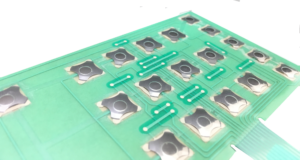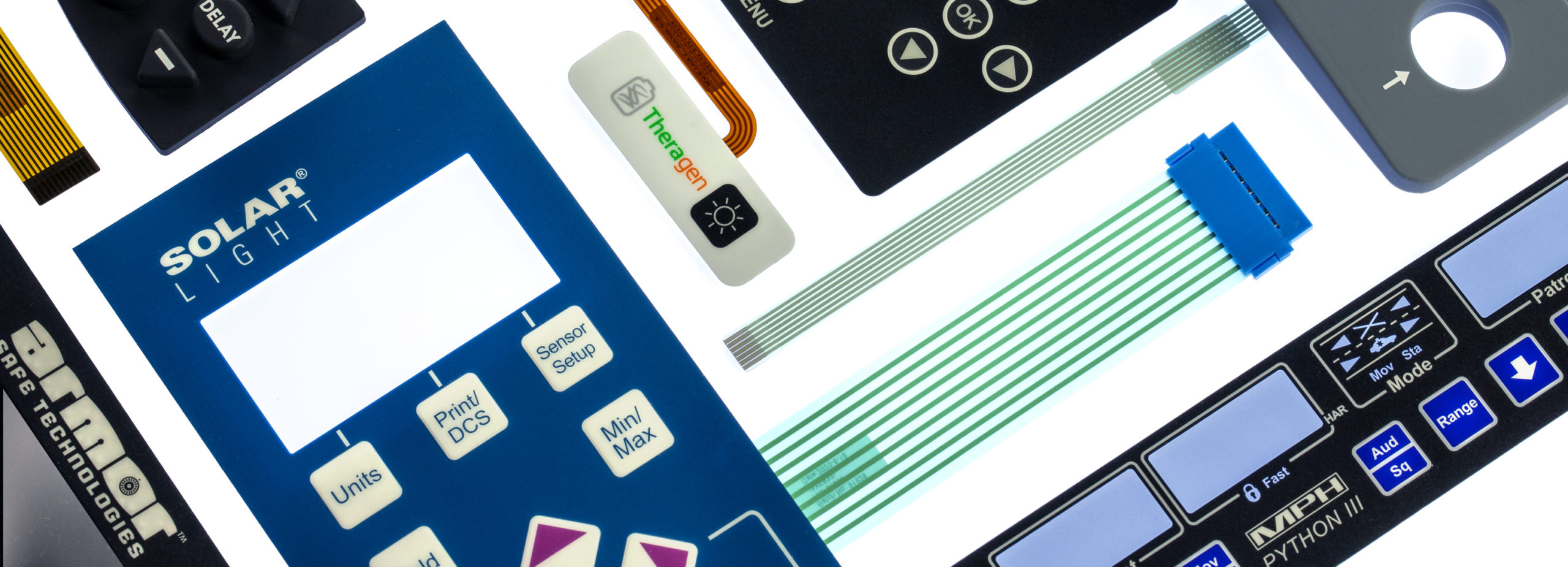How Membrane Switches Are Used to Enhance Safety and Efficiency in Machinery
How Membrane Switches Are Used to Enhance Safety and Efficiency in Machinery
Blog Article
Membrane Layer Switch Over Technology: The Secret to Trusted and Affordable User Interfaces
Membrane switch innovation has arised as a pivotal part in the layout of interface, providing both reliability and cost-effectiveness across a diverse array of applications. Its robust building ensures resistance to ecological obstacles, while the versatility in design permits tailored services that satisfy specific sector demands. As we check out the complex advantages of membrane buttons, their capacity for development increases questions about future applications and advancing fads. What does the next chapter hold for this modern technology in a progressively digital landscape?
Understanding Membrane Switch Over Innovation
Membrane layer switch innovation is a widely used user interface service in different digital gadgets, supplying a smooth mix of performance and style. This modern technology integrates numerous layers of products, normally including a graphic overlay, spacer layer, and a circuit layer. The visuals overlay displays the interface aspects, while the spacer layer divides the circuit layer from the overlay until an individual turns on a button.
When stress is related to the overlay, the circuit layer finishes the electric circuit, sending out a signal to the tool. This device allows for different setups, consisting of responsive responses and backlighting options, boosting user interaction. Membrane switches are usually produced making use of sturdy products such as polyester or polycarbonate, guaranteeing long life and resistance to ecological elements like wetness and dust.
The convenience of membrane changes allows their application in varied sectors, including clinical tools, consumer electronics, and industrial controls. Their portable style permits integration into space-constrained settings, giving an efficient individual interface without jeopardizing aesthetic allure. Understanding the intricacies of membrane button modern technology is necessary for makers and developers looking for to develop dependable and efficient human-machine interfaces.
Key Advantages of Membrane Switches
While various user interface services exist, membrane layer changes offer distinct benefits that make them a recommended option in numerous applications. Among the key advantages is their toughness; membrane switches are made to hold up against extreme environmental conditions, consisting of wetness, dust, and temperature variations, guaranteeing lasting efficiency. This durability significantly reduces the need for frequent substitutes, consequently decreasing general maintenance costs.

Additionally, membrane switches are lightweight and portable, making them ideal for applications where room is restricted. Their low-profile layout adds to a streamlined appearance without jeopardizing performance.
Cost-effectiveness is also a noteworthy advantage, as the production process for membrane layer changes often tends to be more economical contrasted to conventional mechanical buttons. This cost, integrated with their reliability and convenience of setup, settings membrane switches over as a sensible option for a variety of sectors seeking reliable and efficient interface.
Applications Throughout Various Industries
How do membrane layer switches adjust to the diverse needs of various sectors? Membrane button innovation is progressively recognized for its flexibility, making it suitable for a large range of applications throughout multiple industries. In the medical area, membrane switches are made use of in diagnostic devices and individual monitoring tools, where their sturdiness and ease of cleaning are essential for maintaining hygiene requirements. The auto industry utilizes these buttons in control panels and control panels, supplying a streamlined visual while ensuring straightforward procedure.
In consumer electronic devices, membrane layer buttons give a compact remedy for remote controls and home appliances, improving individual experience via instinctive style. Furthermore, the commercial market leverages membrane switches for equipment control board, profiting from their resistance to severe Web Site environments, such as moisture and dirt.
Army and aerospace applications additionally make use of membrane layer switches for their reliability and ability to hold up against extreme conditions, ensuring functional performance in essential circumstances. The food and drink sector adopts these buttons for automated systems, where cleanliness and convenience of procedure are vital (membrane switch). Ultimately, membrane switches are tailored to satisfy the distinct demands of each market, confirming their crucial role in contemporary technology user interfaces
Layout and Customization Options

In the realm of membrane layer switch innovation, style and customization alternatives play a critical function in boosting functionality and user communication. These buttons can be tailored to satisfy details functional needs and aesthetic choices, making them flexible parts in different applications.
Among the primary modification alternatives is the layout of the button itself, which can be developed to fit one-of-a-kind interface and ergonomic considerations. By changing the form, size, and arrangement of buttons, makers can develop instinctive styles that promote ease of use. Furthermore, the unification of various colors and graphic overlays permits for branding and boosted presence, guaranteeing that individuals can quickly determine features.
In addition, membrane layer buttons can be crafted with different responsive feedback devices, such as raised buttons or audible clicks, to enhance the user experience. Different products can also be selected for sturdiness and ecological resistance, dealing with elements such as wetness, temperature level variations, and chemical direct exposure.
Inevitably, the comprehensive style and customization alternatives readily available in membrane layer switch technology empower businesses to produce customized options that not only meet practical requirements yet also align with their branding and functional requirements.

Future Patterns in Membrane Layer Switches
As membrane switch modern technology proceeds to advance, future trends are significantly concentrated on boosting customer experience and integrating advanced functionalities. One substantial pattern is the assimilation of touch-sensitive and capacitive technologies right into click standard membrane layer buttons. This advancement enables even more user-friendly user interfaces, offering responsive feedback discover this while maintaining a smooth layout.
Another arising trend is making use of eco-friendly products, driven by the growing demand for sustainable production methods. Suppliers are seeking to minimize their carbon impact by utilizing recyclable substratums and low-impact inks, aligning with global sustainability goals.
In addition, the surge of the Internet of Things (IoT) is triggering the unification of smart attributes right into membrane switches. Enhanced connectivity choices will allow tools to connect with each various other, permitting for seamless integration into broader systems.
Additionally, improvements in printing innovations, such as digital printing, are permitting higher style adaptability and personalization. This allows makers to create elaborate designs and dynamic shades cost-effectively.

Verdict
In conclusion, membrane switch technology represents an essential development in individual interface style, offering substantial benefits in durability, personalization, and cost-effectiveness. As innovations proceed to arise, particularly in touch-sensitive interfaces and sustainable materials, the capacity for membrane layer changes to improve customer experience and capability stays encouraging.
Report this page